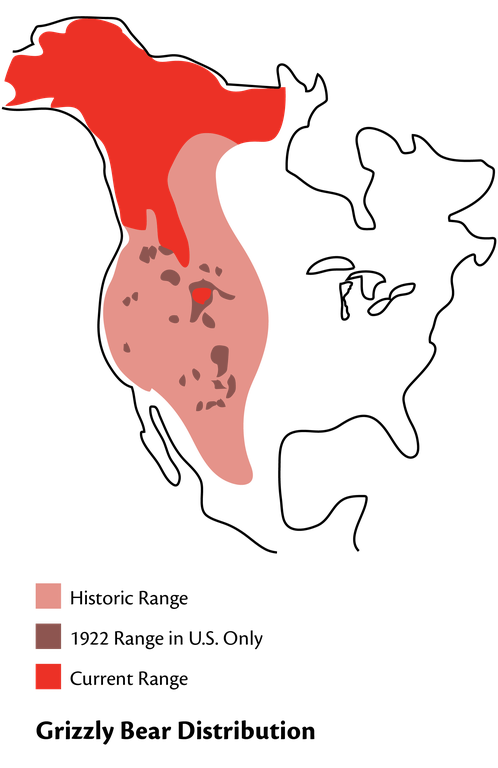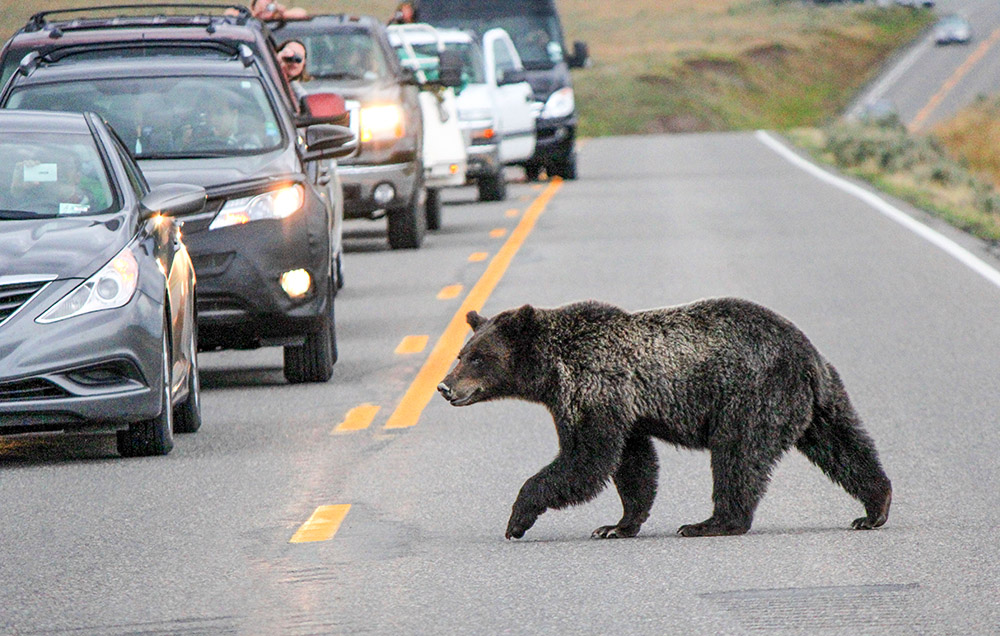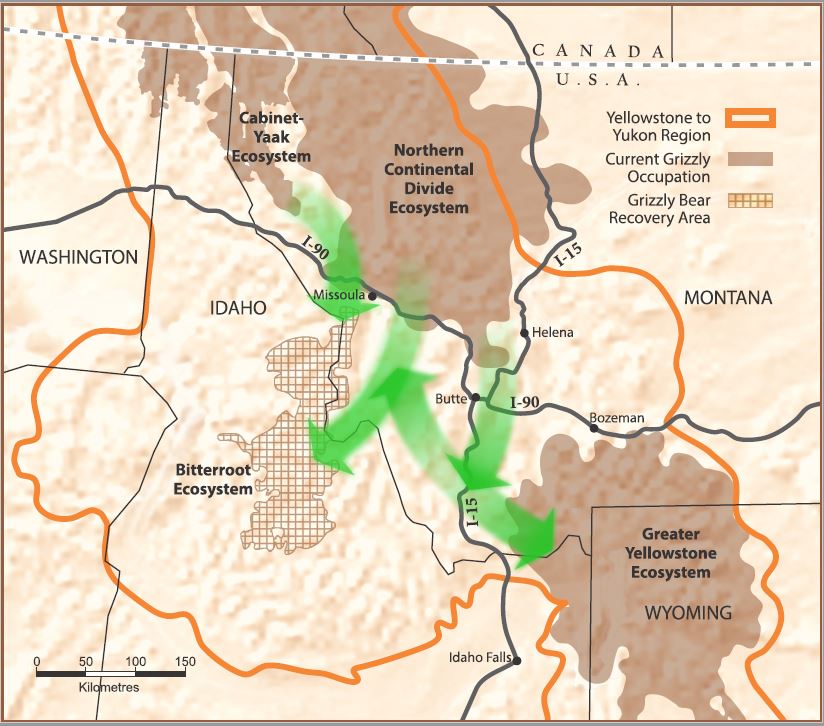Helping grizzly bears stay connected across landscapes is at the heart of our work. What we do today to connect and protect their habitat — with our partners’ and your help — gives hope for a brighter future of people, bears and other wildlife that share common spaces.
Grizzly bears nearly disappeared from the lower 48.
Many people are familiar with what it’s like to visit or live in bear country. There’s a special connection to the bears’ gentle yet powerful presence, a knowing that one could be nearby at any time and that what you do could impact their well-being. Imagine if that feeling disappeared — that bears nearly disappeared.
In the lower 48, the thriving existence of grizzly bears depends on a very important factor to ensure that they don’t vanish: connectivity, especially to the mountain ranges of the Cabinet-Purcell Mountain Corridor and elsewhere in Idaho and Montana.

Grizzly bears require connected habitat to access food and mates. Small islands of habitat are not big enough to ensure that bears retain the diversity that keeps them genetically healthy.
In addition to high-quality, safe habitat, grizzly bears must be able to navigate around some of the fastest growing human communities in the west while staying connected to populations throughout the Yellowstone to Yukon region.
It’s growing communities and roads with high traffic volumes that are slicing up and eliminating bears’ habitat, keeping them isolated.
It’s not too late.
Today, we have an opportunity to reverse the shrinking range of grizzly bears and other wildlife.
We can help bears by reconnecting their currently isolated populations and creating the right conditions to thrive in areas they return to, such as in central Idaho.
For years, Y2Y and partners have worked to recover grizzly populations and improve wildlife corridors in northwest Montana and north Idaho, in hopes that a healthy population would expand its range and move south into the central Idaho’s unoccupied Bitterroot Ecosystem Recovery Area.
In early 2020, two reports of a young male grizzly bear were made in central Idaho. These are some of the first grizzly bears to show up since 1932 when the last known resident grizzly bear was shot in the Selway-Bitterroot Ecosystem.
Bear by bear, these are the kinds of stories that show us that connectivity is working. These are the stories that give us hope.

The benefits of getting connectivity right are not limited to just one species, either. Grizzly bears are often called umbrella species. In other words, when grizzly bear populations are healthy, they also help other species that live in the same region thrive.
By protecting and restoring wildlife corridors from the U.S.-Canadian border into the central Idaho and the Greater Yellowstone Ecosystem, grizzly bears may return to their historic ranges in central Idaho, and Yellowstone bears will be more genetically robust over the long term.
How Y2Y is taking action: Recover and connect habitat
Years of scientific research has provided a clear picture of key corridors that will reconnect the U.S. Rockies.
Such science helps Y2Y and partners identify and protect and restore three corridors in the transboundary Cabinet-Purcell region and support expanding populations of grizzly bears along the U.S. Cabinet-Yaak mountains from 10 bears in 1990 to around 60 today.
Working with communities, state agencies, scientists and other partners, we aim to reconnect the rest of the US Northern Rockies next.

Strenghtening wildlife corridors
Thanks to work with partners and biologists, a series of corridors in Montana have been identified as places grizzly bears can reconnect across the northern Rocky Mountains of the United States.
To connect more northern bears to the Greater Yellowstone Ecosystem and central Idaho, we are working to enhance and connect 12 valley bottom corridors — the lands in between islands of public land habitat that are key to connecting these bears.
Recipe for success as bears bounce back:
- Working with willing property owners to connect private lands.
- Making sure wildlife can move across busy roads.
- Promoting coexistence within communities.
You can help
Who we are working with
- Vital Ground
- U.S. Forest Service
- Montana Bear Education Working Group
- People and Carnivores
- Heart of the Rockies Initiative
Latest news and updates
- Washington forest more ‘bearable’ with food-locker protections, Public News Service, June 17, 2021
- Montana Fish, Wildlife and Parks requests Missoula County support for Maclay conservation easement, Missoula Current, Mar. 5, 2021
- Connecting wildlife habitat requires communities to connect, The Missoulian, Feb 16, 2021
- New land purchase bolsters wildlife corridor in northwest Montana
- Collaborating to improve coexistence in the High Divide
Related reading
- Giving grizzly bears the space they need, The grizzly bear recovery work in North America is important for species conservation. But how does this benefit other species?
- Cabinet-Purcell Collaborative, As part of a trans-border network, Y2Y is working to recover grizzly bear populations in the vital Cabinet-Purcell mountain corridor.
- Safe passage for wildlife across Montana roads, A big part of Y2Y’s work involves working with partners across Montana and beyond to ensure intact habitat stays connected and protected.


